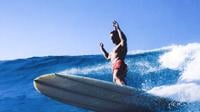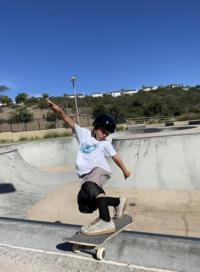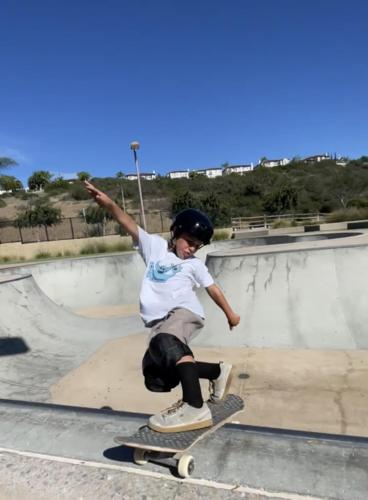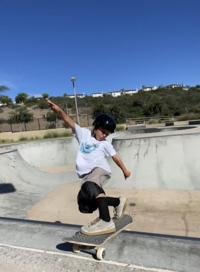Good surf style has long been a pillar of performance in the Dana Point and San Clemente surf scenes
Good surf style—it can be everything. And over the years, Dana Point and San Clemente have played a vital role in the evolution of what that means. Tracing things back, it has to start with Phil Edwards in the early ’60s.
“I remember being down at The Trestle and a few of us were on the beach warming up, and we saw this guy out there that surfed so much different than everyone else. I asked somebody who it was, and they told me it was the ‘Guayule Kid,’ ” recalls Henry Ford, who, like Edwards, starred in some of Bruce Brown’s earliest films.
“That was Phil’s nickname from when he lived in Oceanside,” Ford continues. “What he was doing was so radical and so different from everyone else.”
Blending power, grace and poise, Edwards took a much more athletic approach to riding waves. Standing out at spots such as Killer Dana and Trestles, by the mid-60s, in terms of style and performance, he had pushed the sport to new heights.
Fast-forward through the Shortboard Revolution and the anti-commercialism of the ’70s, and one lands in the bright-lights, big-business era of the ’80s. One of the moment’s biggest stars cut his teeth at spots including T-Street and Salt Creek before rising to international fame.
“Sometimes, people have their own style, and then someone else says, ‘Oh, you gotta fix this.’ And that’s kind of taking away from their style,” explains Matt Archbold.
“Look at Mark Richards’ style; they called him the Wounded Gull. He wouldn’t have been allowed to develop like that today. Or Rabbit (Bartholomew’s) style. They surfed different,” he adds. “And that’s what I’m trying to say; everybody needs to have their own style. They need to be themselves. … I let people influence my surfing, but I’ve tried to retain my own style.”
On the subject of stylistic influences, one generation inspires the next, and before you know it, the sport is soaring to new heights.
“Martin Potter at T-Street, that moment changed the course of San Clemente’s surfing history forever. As far as I’m concerned, Potter is the godfather of progressive surfing, and he can basically take credit for all of the surfing success that has come from San Clemente,” native son Shane Beschen explains.
“When he first started coming to our town, he ignited a revolution like never before,” Beschen continues. “A new standard of performance was laid out before us in real life; it was a tangible skill that we studied and used as our guideline for what surfing is all about. The speed and radicalness of his approach inspired us all.”
Potter influenced guys such as Archy, Beschen, Dino Andino and Christian Fletcher, but just a few short years later, the script would be flipped. Among those leading the charge into the future was Fletcher’s kid brother, Nathan.
A pioneer in waves of consequence, as well as aerial surfing, Nathan was exposed to the best surfers in the world growing up, but it was his friend from Kauai who left one of the biggest impressions on him.
“What Andy (Irons) was doing, it’ll always stand out. He wasn’t riding anything different than your standard shortboard, but the lines he was drawing, there was nothing standard about them,” the younger Fletcher describes about a boat trip the two were on together in 2001.
“It was very powerful and aggressive surfing, very progressive, but he also had this smooth, relaxed, spontaneous thing going on,” Nathan adds. “You know, that Andy style where he always looked in control, even when he was on the edge of being out of control.”
Powerful, aggressive surfing with smooth, effortless control, that’s what set Phil Edwards apart from the pack, and it’s what sets guys such as Matt Archbold and Andy Irons apart as well. As Archy said, we shouldn’t be afraid to be influenced by what others are doing, but we should always be proud of our own individual style.








